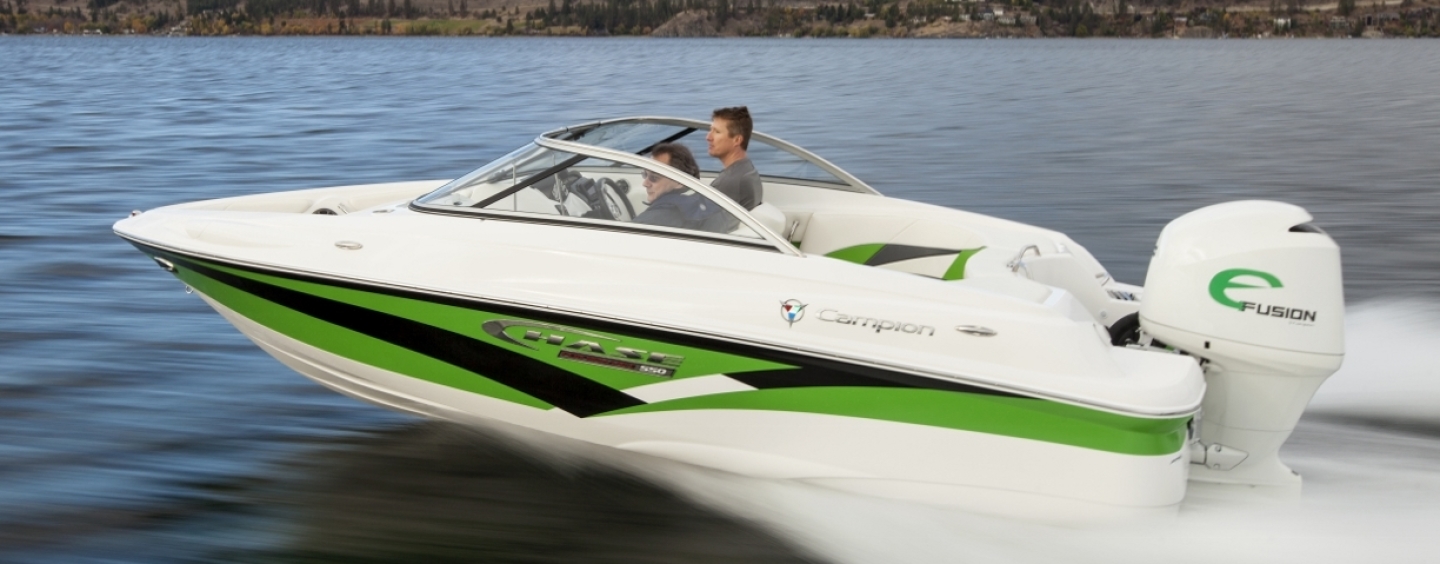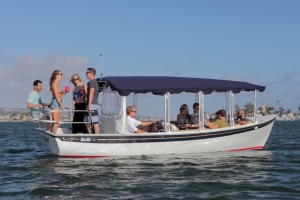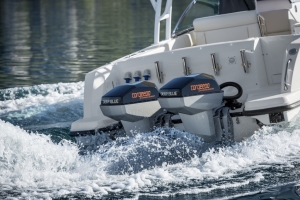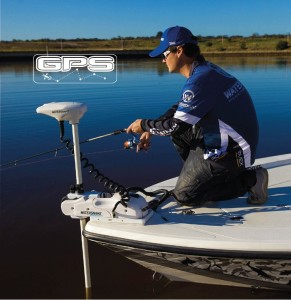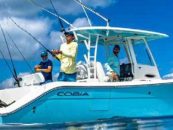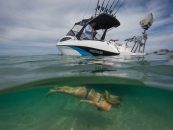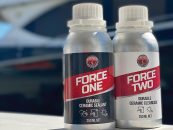Electric powered engines have recently been regarded as the future when it comes to propulsion systems. There is a perception that electric engine technology is a new concept. However, electric motors have been in existence since the early 1800’s. Mortiz Hermann Von Jacobi, a Russian inventor, developed an electric motor that powered the first electric cars. In 1836, with financial support from Tsar Nicolas, Jacobi installed an improved version of his motor in a 28-foot paddle boat. With the boat carrying 14 passengers, it crossed the Neva River on September 1838. This would be the first documented launch of an electric boat.
Present-day electric outboards
There are several companies manufacturing electric boat engines and distributing globally. We take a look at four brands that are currently available in the Australian market.
Duffy. Jacobi was restricted by the technology and materials of the time, his electric boat capable of just 2.5 kph and eventually improved to 4 kph. With the advent of the petrol outboard motors, the use of electric power for boats declined from the 1920s until the Duffy Electric Boat Company of California started mass-producing small electric craft in 1968. Its founder, Marshal “Duffy” Duffield, came up with the idea by taking the electric motor from an old golf cart and placing it in an old motor boat. He eventually patented his unique motor design and has produced over 10,000 boats to this day.
Torqueedo. This is one of today’s most advanced electric propulsion systems. Torqueedo engines are designed and manufactured in Germany and distributed locally by Eco Boats Australia. The torqeedo outboard range from 1HP for trolling, to an impressive 80HP able to push the hull onto the plane.
One important feature of Torqueedo electric systems is a flatter torque curve. “Electric engines feature a much flatter torque curve than petrol engines. This provides ample torque available at any engine speed, allowing electric engines to run substantially higher efficiency propellers even in lower performance classes,” explains Steven Mullie, managing director of Eco Boats Australia.
The Torqeedo company has also pioneered the development of lithium batteries for boat applications. Uniquely, the brand’s “Travel” model outboards incorporate the battery at the top of the outboard for convenience.
Watersnake. This is another electric outboard brand well-suited for Australian conditions. While the entry level Watersnake models are transom-mounted tiller steer, a fisherman will find the bow-mounted electric outboard with foot controls useful for stealth fishing. The bow mounts are installed as close to the centre line as possible and the thrust of the propeller is used to ‘pull’ the boat along. With a foot control for steering and throttle, this method is useful for lure casting and trolling. The top-end models offer inbuilt GPS functions for locking on locations and travelling straight lines to destinations. Recommended to be powered by deep cycle marine batteries, the Watersnake range offers 24-lb to 80-lb thrust with battery life determined by how fast you are running the motor, the payload and the conditions, i.e. wind and chop.
UQM ReGen Nautic. This is an electric outboard that truly performs like a high-power performance petrol engine, able to push a boat up onto the plane and even pull an adult water-skier out of the water. The company are producing 100-, 180- and 300-HP models with the popular model boasting a staggering 135-kw output. While these models are now available on the market, the cost of purchasing both the engine and the bank of batteries required is preventing this revolutionary technology from directly competing with petrol powered engines in the Australian market.
As the world advances into electric powered vehicles, the constantly improving low-cost battery technology will eventually be utilised by electric boat engine builders. Regen Nautic reports, “With the recent advances in energy storage, and the highly efficient UQM motor system, we are starting to see some commercial marine applications that have complete system payback in as little as twelve months.” The president and chief executive officer of UQM Technologies, Eric R. Ridenour, believes, “Everybody will have electric outboards.”
Electric outboards on GC waterways
The Duffy technology caught the attention of Gold Coast resident Nitsa Kerr, who originates from California. Kerr is utilising the Duffy electric power boat technology in her iconic Southport-based boat hire company. The tourist attraction can run the boats during a days trading hours with a single charge, and the silent motors make the Duffy boats very sociable, allowing quiet conversation while cruising the Gold Coast waterways. Kerr is an ambassador for electric boats and shares real life advantages of the Duffy technology. “We’re on our sixth year of business and we haven’t yet replaced any of our batteries. What’s more, our boats are fitted with double batteries and with a single charge we get nine-and-a-half hour running time, which makes good sense for a rental business.”
The Sanctuary Cove resort security team command a small fleet of electric powered patrol boats. The catamaran style hulls are equipped with dual Torqeedo Cruise 4 outboards, which are equivalent to 10HP petrol models, provide silent patrolling of the residential waterways. Reaching a top speed of 10 knots on a full charge, the boats can operate for 20 hours. Torqeedo distributor, Steven Mullie suggests, “In this type of application, the electric engines save money and have additional benefits. Electric outboards are ideal when in operation 24 hours, 7 days a week. With no rest, the low speed patrol work, with constant requirements for forward and reverse movement, are ideal for pollution free residential patrolling. This application does not require high speed, just a constant 4 knots. So, using electric engines ensures minimal running costs and low maintenance service because there is only one moving part. Coupled with the Torqeedo lithium batteries, they work really well.”
There is also a significant advantage of electric power when canal boating and fishing. For low-speed cruising of the canals or for use while lure-fishing, the quiet serenity of the electric engine is well suited. Electric trolling engines, installed onboard as an auxiliary engine used for fishing, have been a hugely successful seller for boat and engine dealers and fishing and tackle store operators.
When you compare a clean-running 4-stroke outboard and an electric outboard, the long term cost differences are not so significant. However, the high performance electric engines—marketed as an alternative to petrol engines and carry a much higher price tag that include a large bank of batteries—have not yet been as successful in terms of sales as predicted. Steve Mullie states, “In 20 years, the price comparison between high-powered electric outboards and petrol engines will be less significant.”
These high-end models are initially being marketed to commercial users looking for a long-term return-on-investment by installing electric engines for considerable fuel cost savings and lower maintenance expenses.
The progress of electric boat engine technology and market penetration has been summed up best by Elco Motor Yachts owner Joseph Fleming. He said, “We’re at the beginning of a tidal wave. Everything that moves—cars, trucks, trains, boats and planes—they’ll all be electric.”
Electric vs petrol
1 Purchase Price:
The low-end electric engines used for cruising and trolling are reasonably priced and in many cases cheaper than petrol engines for some applications. While the high-end performance models are considerably more expensive than petrol, this is due to the small numbers currently being sold. The larger banks of batteries used to store the required power for the performance models are costly even when compared with fuel consumption at top speed.
2 Recharging:
Batteries for electric engines are heavy. They also often take a long time to recharge. The recharging of the deep cycle batteries will take a few hours. However, an electric boat engine can be recharged using solar panels or wind generators while at sea.
On the other hand, refueling a petrol engine is instant. Petrol engine capacities are only limited by the size of the fuel tank.
Recharging the batteries will cost only a few dollars, whereas petrol prices are up to $1.80 per litre at waterside pumps.
3 Maintenance and storage:
The electric boat motors are almost maintenance-free and do not require regular servicing. A power engine will cost at least a few hundreds of dollars a year or more to service.
As petrol is a flammable substance, it is often difficult to store. Not so with electric systems.
4 Safety and convenience:
With electric technology, batteries can be also used to power lights and other electric systems.
The propeller of a lower torque electric engine will immediately stop if it has been obstructed, whereas a petrol engine will cause serious harm if it makes contact with the body.
Electric engines are a quiet alternative to the often messy and loud petrol motors. Electric engines have proven to be very dependable.
Boat Propulsion Option
Most electric outboard motors have 0.5 to 4-kw direct current (DC) electric motors, operated at 12 to 60 volts DC. These systems have the propeller fixed directly to the motor, which is mounted in the lower unit under water. This setup limits the power output. Recently developed outboard motors are powered with an alternating current (AC) or DC electric motor in the power head like a conventional petrol engine. With this setup, a motor can produce 10-kw output or more and is able to replace a petrol engine of 15 HP or more.
The advantage of the induction or asynchronous motor is the power transfer to the rotor by means of electromagnetic induction. As these engines do not use permanent magnets, they require less maintenance and develop more torque at lower RPM.
By Andy Kancachian
Research by Kim Rafael Llige






















